Uluburun, One of the Oldest and Wealthiest Shipwrecks Ever Discovered
The Uluburun is a 3,300-year-old shipwreck discovered off the coast of Uluburun (Grand Cape), near Kaş in south-western Turkey. It is among the oldest ships ever discovered and contained one of the wealthiest and largest known assemblages of Late Bronze Age items found in the Mediterranean. The ship was carrying over 20 tons of cargo, believed to be a royal order. In total, more than 18,000 spectacular artifacts have been recovered, including precious jewels, luxurious raw materials, and even the golden seal of Egyptian Queen Nefertiti.
Oldest Ship the Uluburun
The Uluburun was first discovered in 1982 by Mehmed Çakir, a local sponge diver, on a steep rocky slope at a depth of 44 to 52 meters (144.35 to 170.60 ft), with artifacts scattered down to 61 meters (200.13 ft). Excavating it was a mammoth task, and required eleven consecutive campaigns of three to four months, conducted by the Institute of Nautical Archaeology, totaling 22,413 dives between 1984 and 1992.
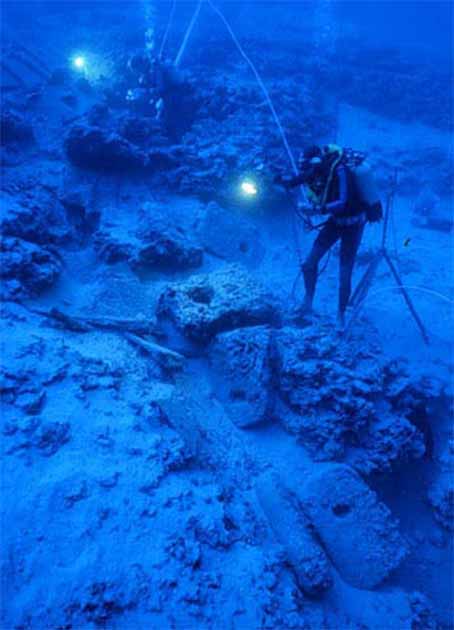
The Uluburun shipwreck site as viewed from the deeper end showing displaced anchors originally stowed near the bow. (INA)
The ship itself was 15 meters (49.21 ft) long and is the earliest known example of a ship constructed using the advanced mortise and tenon technique, where planks were joined by flat tongues of wood inserted into slots cut into the planks. The wood is Lebanese cedar, indigenous to the mountains of Lebanon, southern Turkey, and central Cyprus.
- The Bronze Age - A Spark That Changed the World
- Secrets of 829-Year-Old Post-Viking-Era Shipwreck Revealed
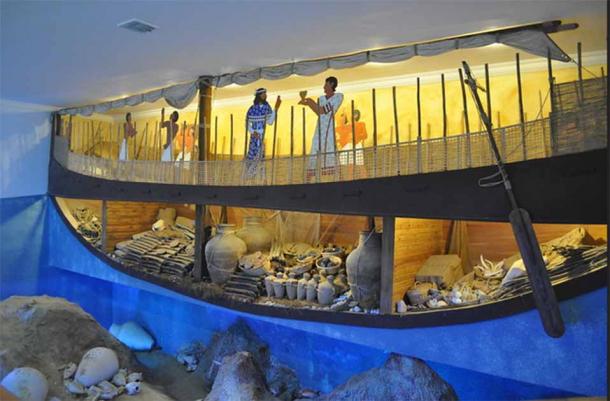
A reconstruction of the interior of the Bronze Age Uluburun shipwreck, 1330-1300 BC. (Panegyrics of Granovetter/CC BY-SA 2.0)
Treasures and Luxurious Goods Have Pointed to an International Trade Network
At the time of sinking, the ship was carrying over 20 tons of cargo, including both raw materials and finished goods, which have been traced back to at least seven different cultures, including Mycenaean, Syro-Palestinian (forerunners of the Phoenicians), Cypriot, Egyptian, Kassite, Assyrian and Nubian.
The main cargo was approximately 10 tons of primarily Cypriot copper in the form of 354 ingots. The Uluburun also contained the earliest known intact ingots of glass; 175 of disc-shape were recovered, which were colored with cobalt blue, turquoise, and a unique lavender.
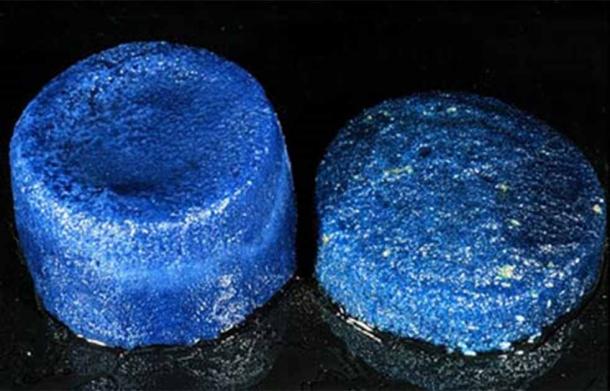
The earliest intact glass ingots of disc shape. Chemical analyses have revealed the use of cobalt (left) and copper (right) as coloring agents. (INA)
Other raw materials included a ton of terebinth resin contained in around 150 Canaanite jars (most likely for incense), logs of Egyptian ebony, ostrich eggshells, elephant tusks, hippopotamus teeth, seashells, and tortoise shells.
The finished goods were just as luxurious - Egyptian objects of gold, electrum, silver, and stone; Canaanite jewelry; thousands of beads made of glass, agate, carnelian, quartz, faience, and amber; and finely crafted figurines, including a bronze female statuette, partly clad in gold, of Syro-Palestinian origin. One of the most unique and precious items was a scarab bearing the cartouche of Queen Nefertiti.
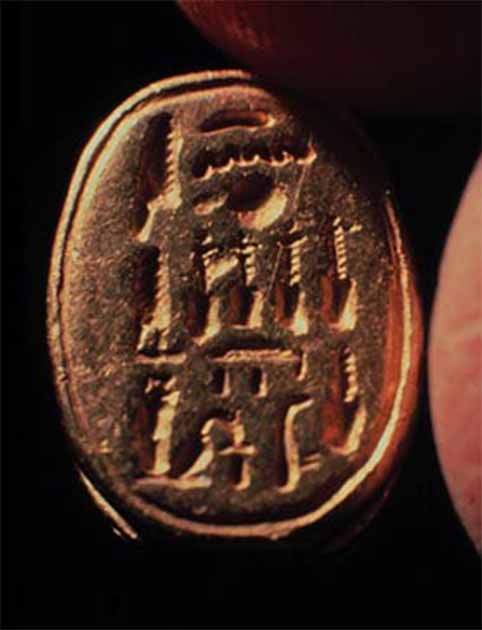
Egyptian scarab naming Queen Nefertiti. (INA)
Other artifacts included ivory cosmetics containers, a trumpet carved from a hippopotamus incisor, bronze tools and weapons, lead net and line sinkers, netting needles for repairing nets, fishhooks, a harpoon, a bronze trident, and wooden writing boards. However, the largest group of manufactured goods on the ship was Cypriot fine- and coarse-ware ceramics.
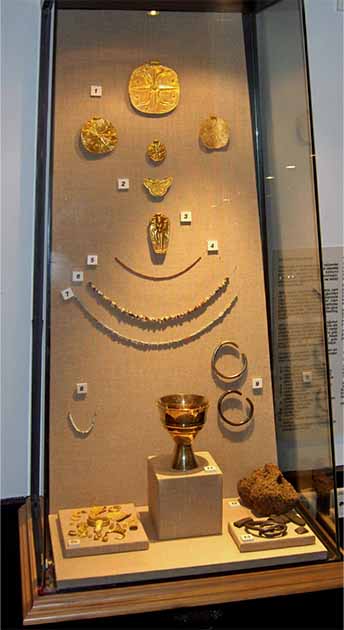
Some of the Cypriot ceramics found on the Uluburun. (Georges Jansoone Jojan/CC BY-SA 3.0)
An analysis of the artifacts that were personal possessions of the crew members, such as tools, oil lamps, and writing boards, suggests that the crew were Canaanite and/or Cypriot, although at least two were Mycenaean.
The proveniences of the artifacts suggest that the Late Bronze Age Aegean was part of an international trade network perhaps based on royal gift-giving in the Near East, in which ships sailed the Mediterranean on a circular route from Syro-Palestine to Cyprus, onto the Aegean, and occasionally as far west as Sardinia, then back home via North Africa and Egypt.
- The Legacy of Armenia: Trade, Metallurgy, and Forging of Precious Metals of the Ancient World
- Three Ancient Shipwrecks Still With Cargo Found Off Greek Island
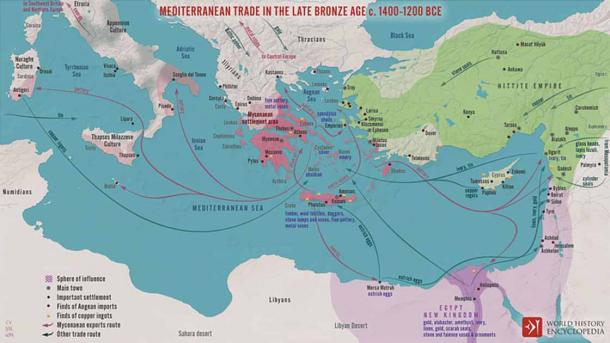
Trade routes in the Eastern Mediterranean during the Bronze Age. (Simeon Netchev/CC BY-NC-SA 4.0)
Research Continues
The study of the Uluburun shipwreck is ongoing. The researchers are still working to identify all of the objects that were found on the ship. They are also continuing to study the chemical and isotopic composition of the ingots to learn more about their origins. The shipwreck is a valuable source of information about the ancient world, and the new study provides further insights into the complex trade networks and cultural exchanges that were taking place at the time.
In 2022, a team of scientists, from Arts & Sciences at Washington University in St. Louis, discovered small communities of highland pastoralists living in present-day Uzbekistan in Central Asia made and provided roughly one-third of the tin found aboard the ship. This tin that was on the way to markets in Mediterranean to be converted into the popular bronze metal.
The Uluburun is considered one of the most important and fascinating sea wrecks ever discovered, and has provided archaeologists with an abundance of information about ancient society and culture across the Mediterranean, including Bronze Age ship building, sea routes, trading practices, and the production and exchange of raw materials and luxurious goods. Today, the remains of the Uluburun and its cargo are housed in the Bodrum Museum of Underwater Archaeology.
Top image: Replica of the Uluburun shipwreck. Source: Antalya Info
References
Uluburun Ancient Shipwreck - Mediterranean Tourism Development Project. Available at: http://www.antalyainfo.org/eng/antalya-Diving-Guide-17.aspx
Institute of Nautical Archaeology. Uluburun, Turkey. Available at: https://nauticalarch.org/projects/uluburun-late-bronze-age-shipwreck-excavation/
Cemal. The Uluburun Shipwreck and Late Bronze Age Trade. Pulak. Available at: http://berlinarchaeology.files.wordpress.com/2013/01/pulak-2008289-310-uluburun.pdf
N. Fawcett and J C Zietsman. 2001. Uluburun – The Discovery and Excavation of the World’s Oldest Known Shipwreck. Available at: http://akroterion.journals.ac.za/pub/article/view/116
By Jo Gillan
















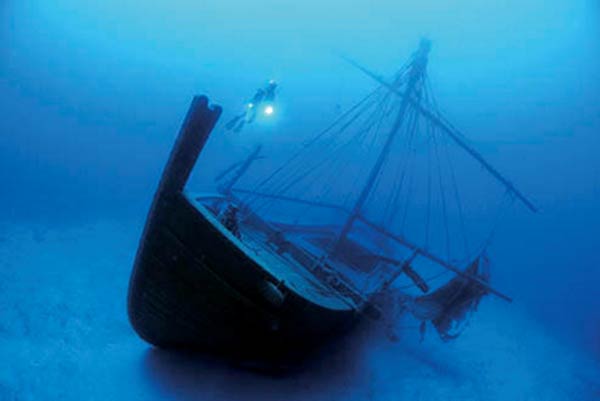

Comments
And this was just one ship! Now imagine whole fleets of such ships. The riches transported before the Bronze Age Collapse would even today be an eye-opener.
The term Syropalestinian is incorrect. The term Palestine was coined some 1,100 years later after the destruction of Judea following the third Judean war in ca 135 AD when the majority of the population was exiled. At the time of the article the people living in the area were Canaanites, Philistines, Hebrews and Assyrians.
I accidentally posted the above comment twice.
it's difficult to accept that people who were capable of this level of technology were somehow not capable of sailing across the atlantic or into the south pacific.
http://chefsdreams.com